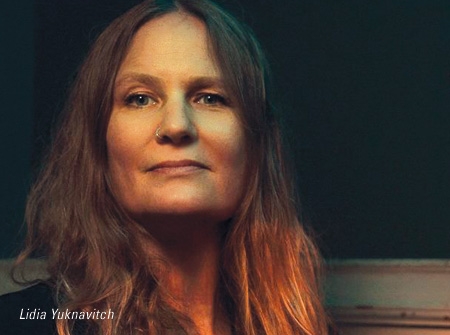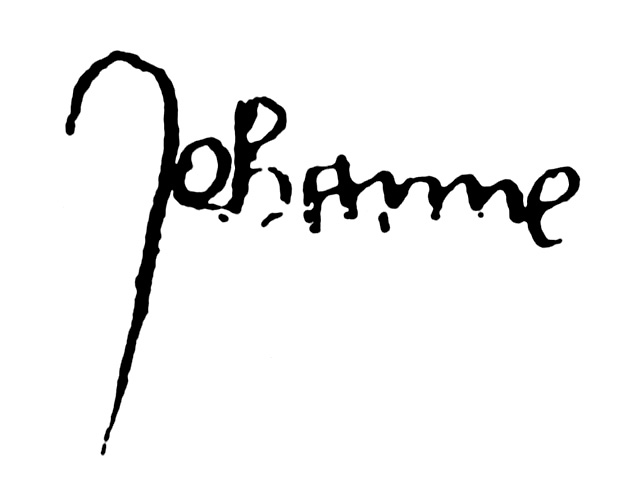In a future that is too close for comfort, Earth, after countless world wars, is a charred wasteland. The wealthy survivors have retreated to a space platform, called CIEL, hovering over the blasted Earth. Enclosed extraterrestrial living has reduced CIEL’s inhabitants to pale, sexless versions of their former selves. Ruled by celebrity cult leader, Jean de Men, CIEL functions as a “quasi-corporate police state” that’s just begging for revolt. When Christine begins to hear the song of Joan, their Earthly child martyr and ecoterrorist, the revolution is born again. Gemma Webster and Theodore McCombs discuss this over-the-top dystopia from one of experimental literature’s wildest misfits. Warning: spoilers ahead.
Part I: Dystopia, à la Yuknavitch
Theodore McCombs: With the last election representing, in effect, our national decision to not try and stop climate change, so many excellent authors—Paolo Bacigalupi in The Water Knife, Claire Vaye Watkins in Gold Fame Citrus, and now Lidia Yuknavitch in The Book of Joan—are looking ahead to what our world will be after we pass some catastrophic threshold. And what Yuknavitch proposes is pretty plausible: the wealthiest escape the worst consequences and form some lonely, serfless society in the wreckage.
Here, that dystopia is the space station CIEL. The geocatastrophe on Earth and exposure to cosmic radiation has radically transformed this elite remnant into de-sexed, de-pigmented wraiths without reproductive capability (or anatomy!), living in pointless, dwindling decadence.
Gemma Webster: The CIEL inhabitants are bored in this meaningless, sexless world. As a result, the primary entertainment on CIEL is a type of body modification that Yuknavitch calls “grafting”. She blurs the line between body modification—something that is done for display and pride—and its more secretive cousin, body mutilation. Onboard CIEL, the inhabitants court bodily destruction in the name of entertainment what is probably, really, an effort at exerting control over these bodies that have become so alien.
TM: Yes! These are the supposed masters of the world that was—lords of 'Heaven'—processing the loss of everything they have taken for granted and abused.
GW: Christine de Pizan, the first point of view character, is a grafting artist and teacher. The book opens with her cauterizing a story into her skin. It is the forbidden story of “Joan of Dirt.” For her, the burning of words into her skin is an act of rebellion and relief (much like other cutting and body mutilation behaviors).
TM: Do you see a connection between what Christine is doing and what we find out Joan has done? [Again, spoiler!] In the climax of her rebellion against the celebrity-warlord Jean de Men, after years of endless war and slaughter, Joan basically decided to euthanize the human race and, somehow, summoned up global apocalypse. What do you make of that theme of self-harm, on the personal and global level? Is it… heroic? Good-ish? Or is it inhuman?
GW: Self-harm is actually a very human impulse, as is its companion, suicidal behavior. The way the book’s wealthy characters hurtle toward geocatastrophe is a form of suicidal behavior. It’s one that we don’t readily acknowledge as such because both the catastrophe and its avoidance are so large and require such group participation that as individuals we can hardly wrap our little minds around it. We are just not accustomed, in America in particular, to think of ourselves as one piece of a larger organism or ecosystem. We are hellbent on our individualism.
TM: That’s the promise that Jean de Men makes to his elite: we’re all so special that we get to “ascend” beyond the Earth. It’s radical individualism. In space.
GW: And that desire for individuality, combined with the self-harming impulse, is what gives rise to the grafting arts onboard CIEL. Grafting helps to redefine what has become a generic seeming self through painful and particular modification. For Christine, the pain is both a penance and a reclamation of self through connection to the universal. Thus she burns the story of Joan into her skin; defining herself with the new archetypal hero.
Part II: What Is the Word for Her Body?
TM: Joan’s body is a huge signifier in The Book of Joan, as it also is in real history. When Lidia Yuknavitch spoke at the Tattered Cover in Denver, she observed that the real Joan of Arc’s body is one of the few that can rival the Christ-body in religious suggestiveness. The real Joan’s body was endlessly scrutinized by allies and enemies to verify her all-important virginity; it was destroyed dramatically, cruelly, by those who hated and feared her—death at the stake was not only very, very painful but meant to terrorize the soul, since medieval theology placed great emphasis on the resurrection of the body, and how can you resurrect ashes? Those ashes, however, or what people claim as Joan’s ashes, have become relics. Even less literally, Joan’s body is how the Church remembers her: she was canonized not as a martyr, but as a virgin.
Jean August Dominique Ingres, "Joan of Arc at the Coronation of Charles VII" (1854)
GW: That’s so interesting. As a lifelong heathen I had no idea there was such a difference amongst saints. I quite like the concept of the female analog to the Christ body. That would seem to bring about a balance in the gender spectrum, rather giving us the other end of the spectrum. It summons the notion of a biological balance, literally grounding the theological idea in Earth terms.
TM: I think Yuknavitch wants to do exactly that: take these shreds of abstract theology from her Catholic childhood and reframe them in terms of earth, dirt, physicality. Book II opens with a lyric passage of Joan, living in the scars of post-apocalypse Earth, exploring the grotesque scars on her body, associating each one with a battle or even her lover, Leone. Her body is also generative—it can reboot life on the planet (another earthy Christ analog), or it can be hijacked for prolonging life in CIEL by Jean de Men.
Seriously, fuck Jean de Meun.
GW: Joan’s struggle is a universal female struggle; body autonomy. Which also parallels the CIEL inhabitants' attempts to reclaim their own body autonomy. Except Joan is trying to preserve her natural state and the CIEL-ians are destructively modifying what’s left of their natural state (which has become very alien). Jean de Men has embraced this grotesque life on CIEL because he finds himself at the top. He has no desire to change the horrific status quo (again this is is a very painful mirror to the America we are currently inhabiting). That Christine is not ready to surrender forever to this nightmare brings her into conflict with Jean de Men, and eventually pushes her into active resistance.
TM: Climaxes abound! The dénoument of that active resistance makes Jacobean murder plays look like Sunday school.
Part III: The Book of The Book of Joan
TM: It’s fair to say the book’s own terms, on which it must succeed or fail, are not most reader’s terms. Yuknavitch says she has forsworn allegiance to a main character, and the book willfully breaks other expectations or so-called rules around the progression of plot, the need for science fiction to be scientifically plausible, and the relatability of heroes—of heroines, especially.
GW: This is definitely a book of ideas, which is its virtue and its vice. This actually makes me excited to see what adding some other artists into the mix can bring to the story once it’s made into a movie. There’s plenty of room in this story for the vision of actors, set dressers, makeup artists, and directors.
TM: And Yuknavitch did share that this has been optioned! Let’s hope that it attracts some truly wild auteur who can match Yuknavitch’s extremity. It is really a vision more than a book, isn’t it? Something to be beheld rather than read on a train.
GW: I like that and I am quite excited to see Yuknavitch’s vision come to fuller life. I’d love to see it big and weird. I think that would bring about the balance to the reading equation. Right now it is a book that is heavy on the work for the reader. Turning it into film, I hope, will give a little more weight to the pleasure aspect to balance out the sensation of searing this story into our flesh.
TM: Right! It’s mimetic, in that sense: a story about burning, that burns. It’s as if Yuknavitch took a dystopian adventure, a bring-down-the-system YA potboiler, and boiled it and smoked it into this lyrical phantasmagoria of a dystopian adventure. But then, what else can you do with Joan of Arc, but put her over a hot flame? It’s a book of ecstasies, aggressive politics, and unbelievable violence, all the things that draw us to the real Joan’s story.
Joan of Arc's signature, "Jehanne."
Have you read The Book of Joan? Have you burned it into your pearled and alien flesh? Let us know what you thought in the comments below!
















You won’t want to miss this haunting debut collection. Thin Places by Kay Chronister available now from Undertow Publications.